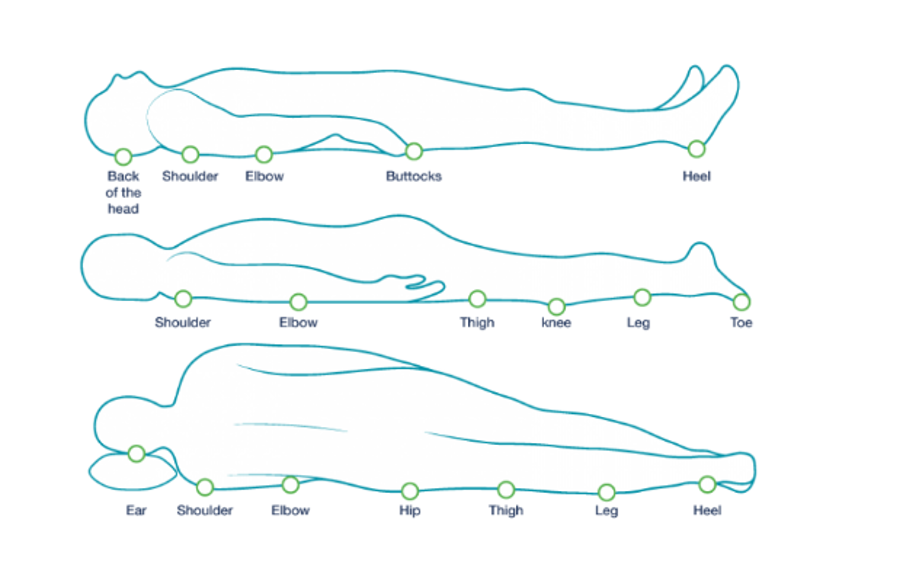WHERE DO PRESSURE INJURIES OCCUR?
PU/PIs are generally most common at anatomical sites over a bony prominence. In adults, the most common locations are the sacrum and the heel. This is due to the thin layer of subcutaneous tissue between the skin and bone, providing minimal protection from the combined forces of pressure, shear and friction.
There is often a reduced blood supply to the extremities due to co-morbidities that compromise the vascular system. These sites account for about half of all PU/PI’s. Other sites commonly affected include the ischium, ankle, elbow, and hip. In children and neonates, the skin over the occiput is most affected. Norton et al., 2018; EUPAP, 2019

It is vital that there is robust documentation throughout the individual’s health care journey to demonstrate that actions have been taken.
The quality standard for pressure ulcers/injuries is mainly focused on timely and accurate assessment and reassessment of a person’s pressure ulcer/injury risk.
The quality standards, including NICE, contain a set of prioritised statements designed to drive measurable quality improvements in three dimensions of quality, including patient safety, experience, and effectiveness. The standard looks at the prevention and assessment of pressure ulcers/injuries in all care settings.
It consists of quality statements that, if followed, would be expected to contribute to improvements in the following outcomes:
- Incidence of Category 2-4 pressure ulcers/injuries
- Health related quality of life
- Length of hospital stay
- Discharge destination (such as patient’s home or care home)
(NICE, 2015)
The quality statements include the following:
- Risk assessment
- Skin assessment
- Patient and carer education
- Repositioning
- Equipment
- Medical device related pressure ulcers/injuries
- Maintaining skin integrity
- Nutrition
These quality statements will be discussed further throughout the module.